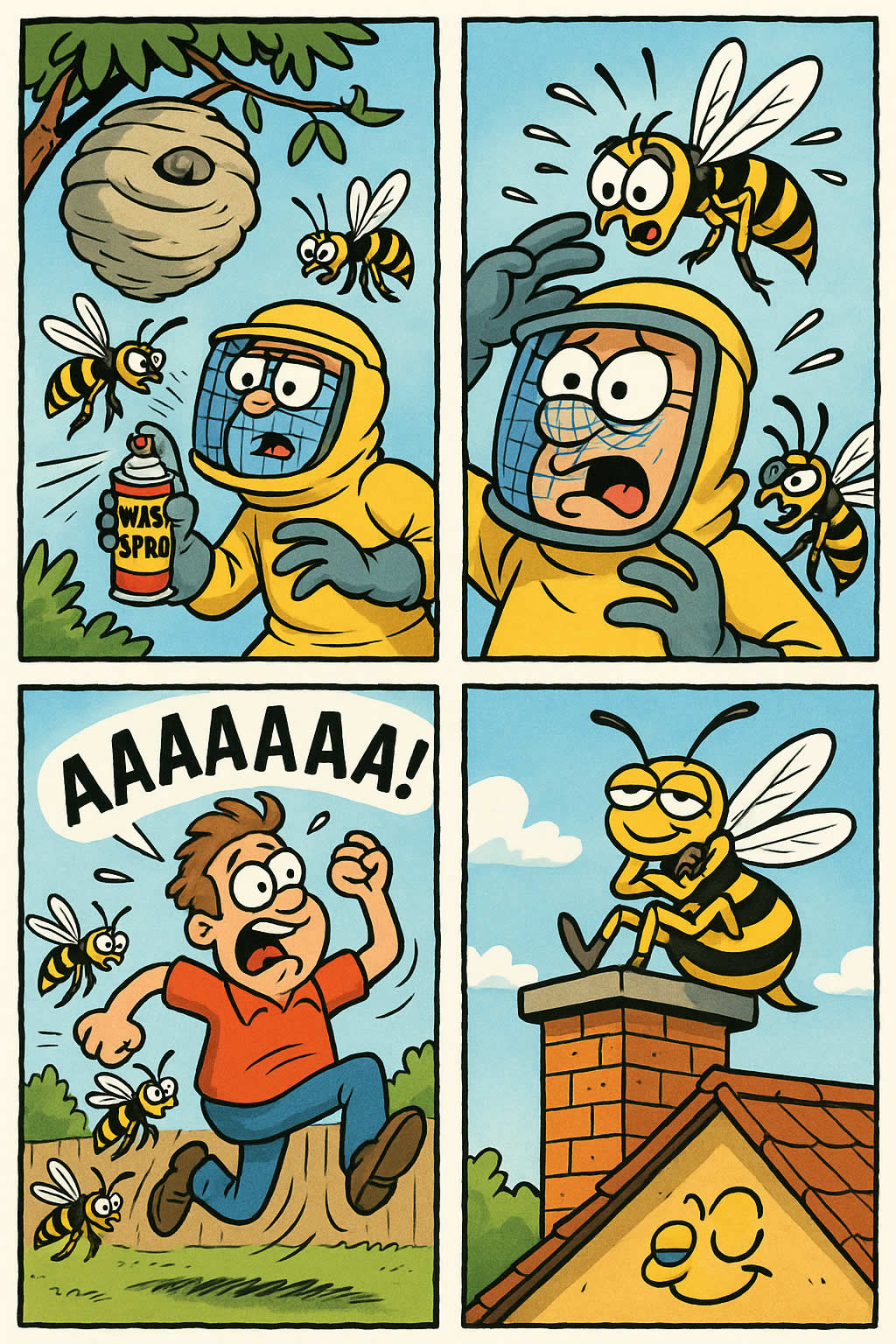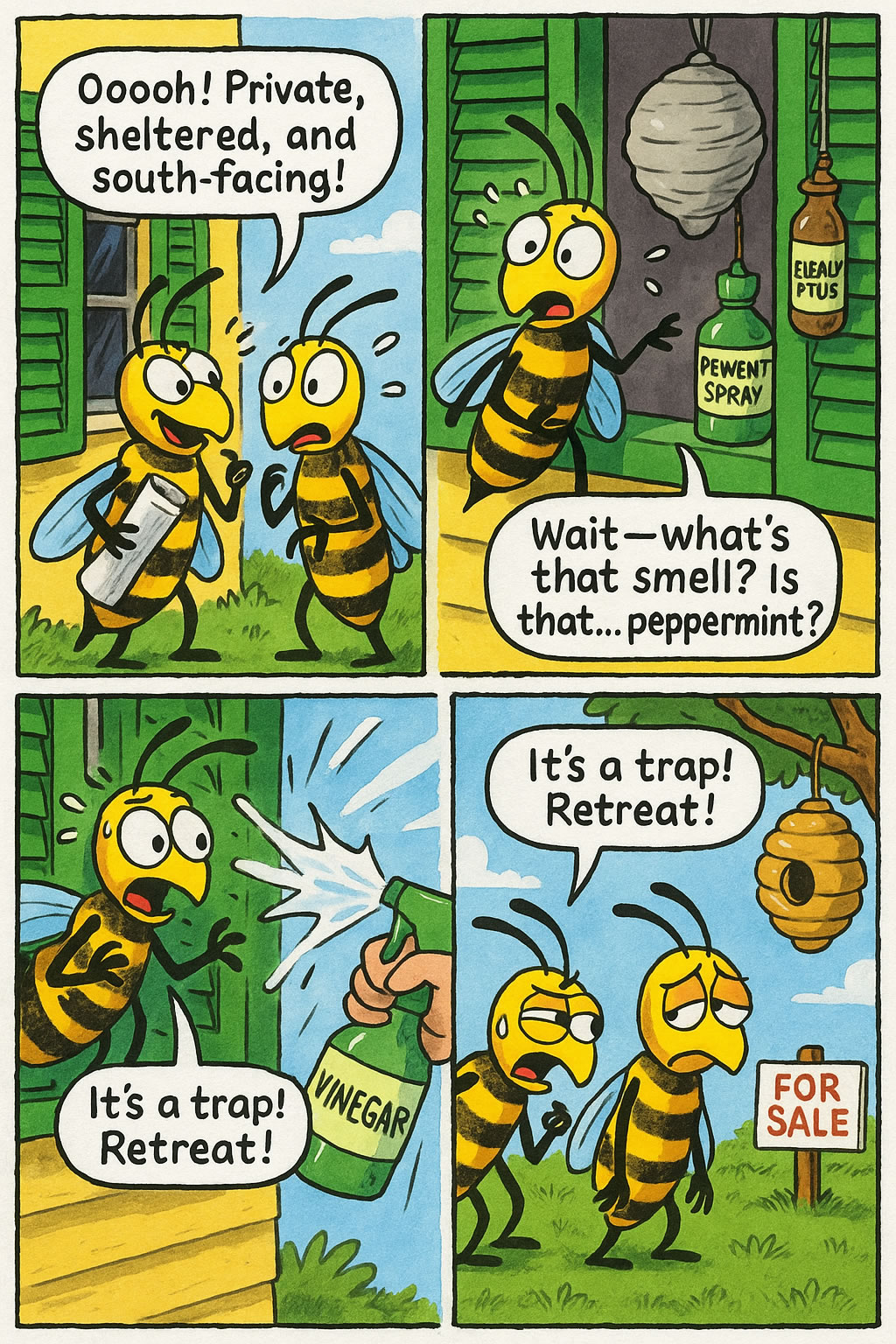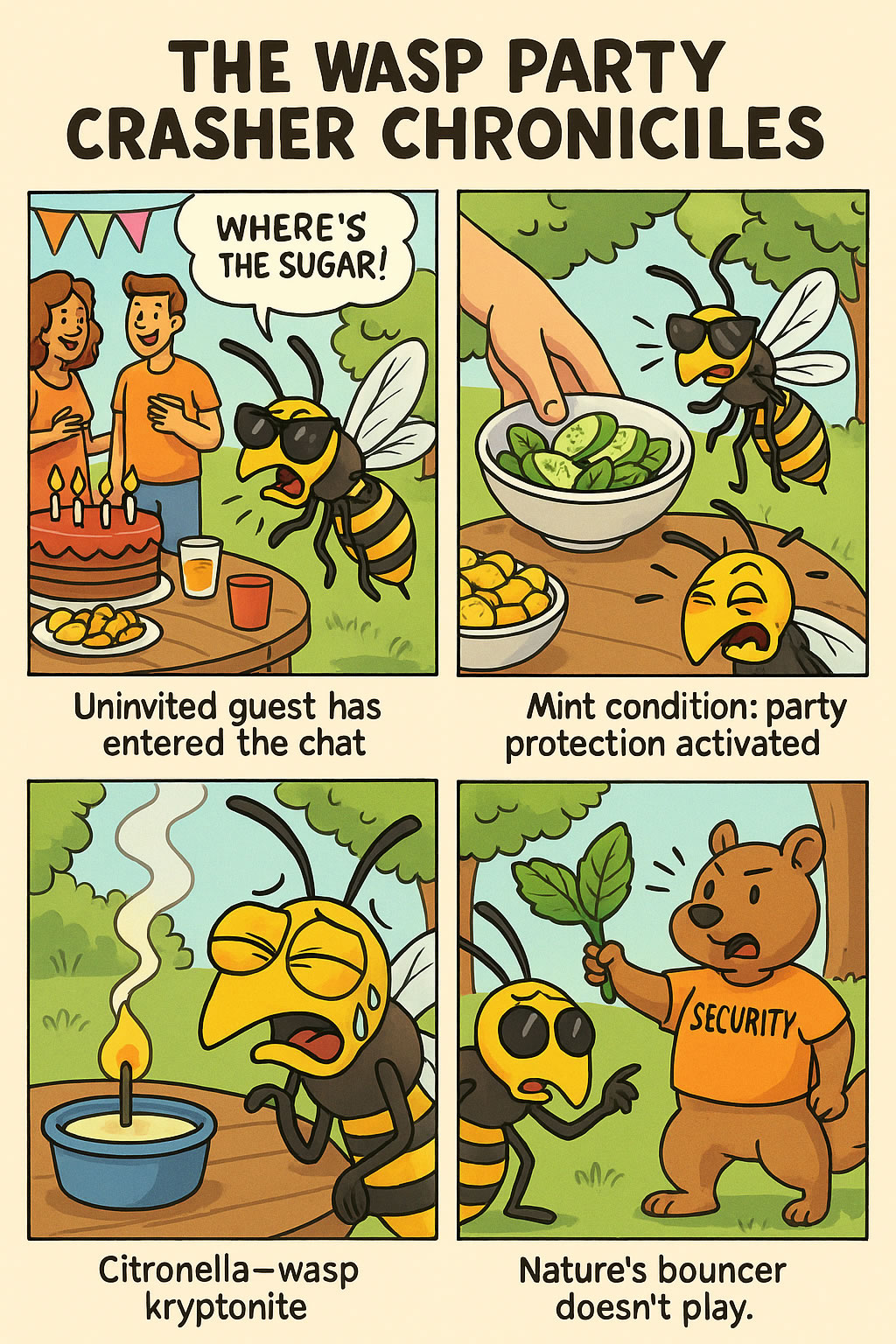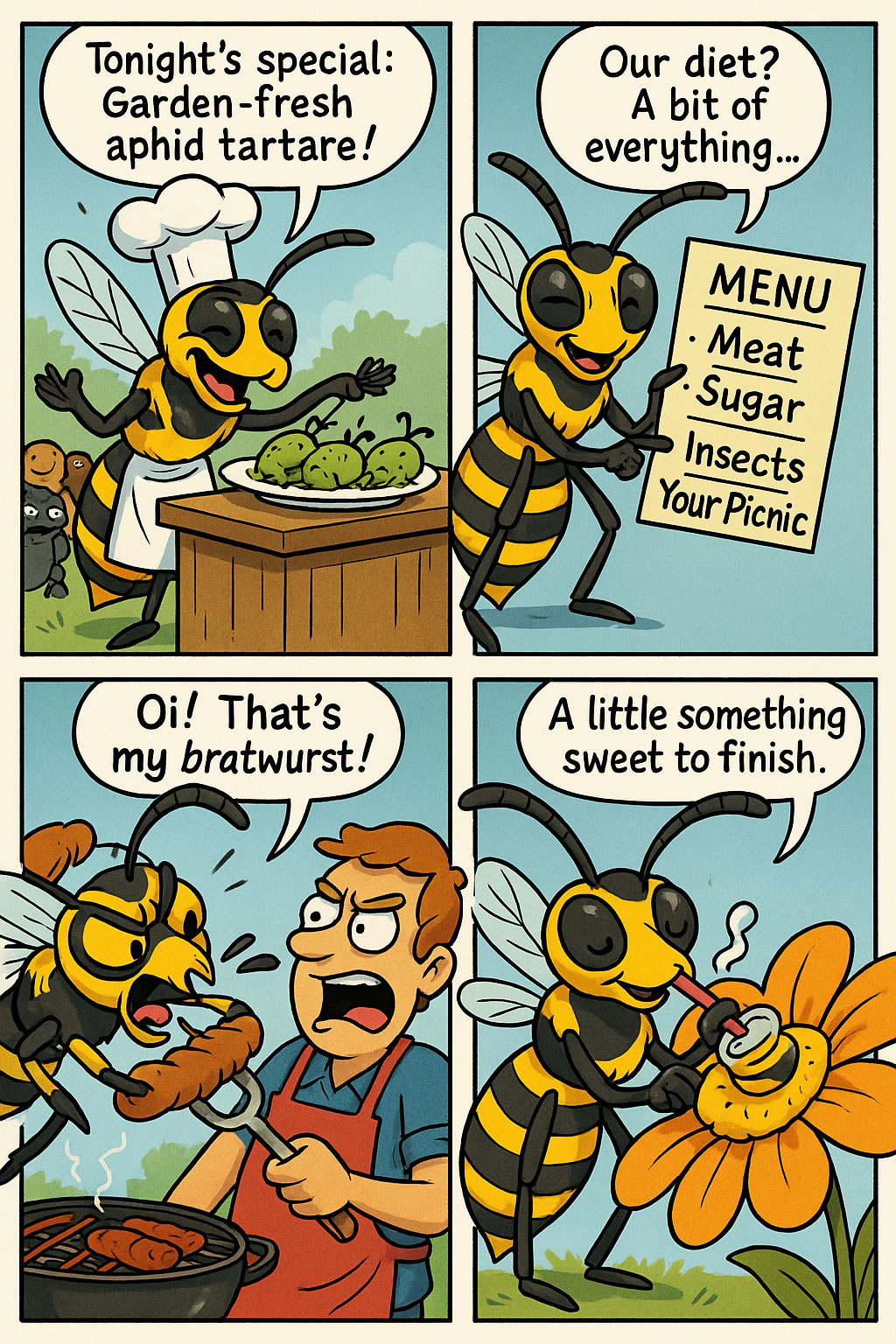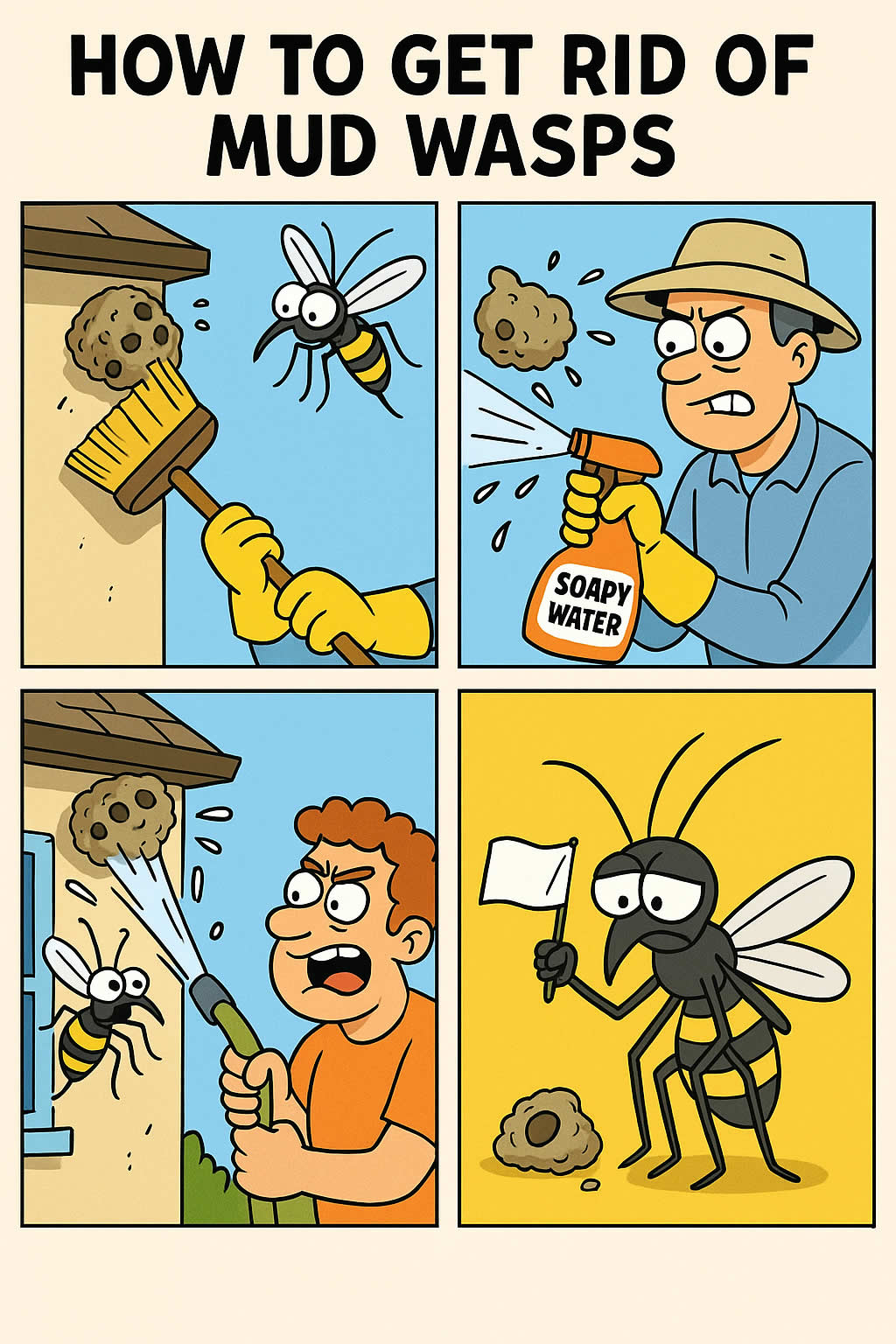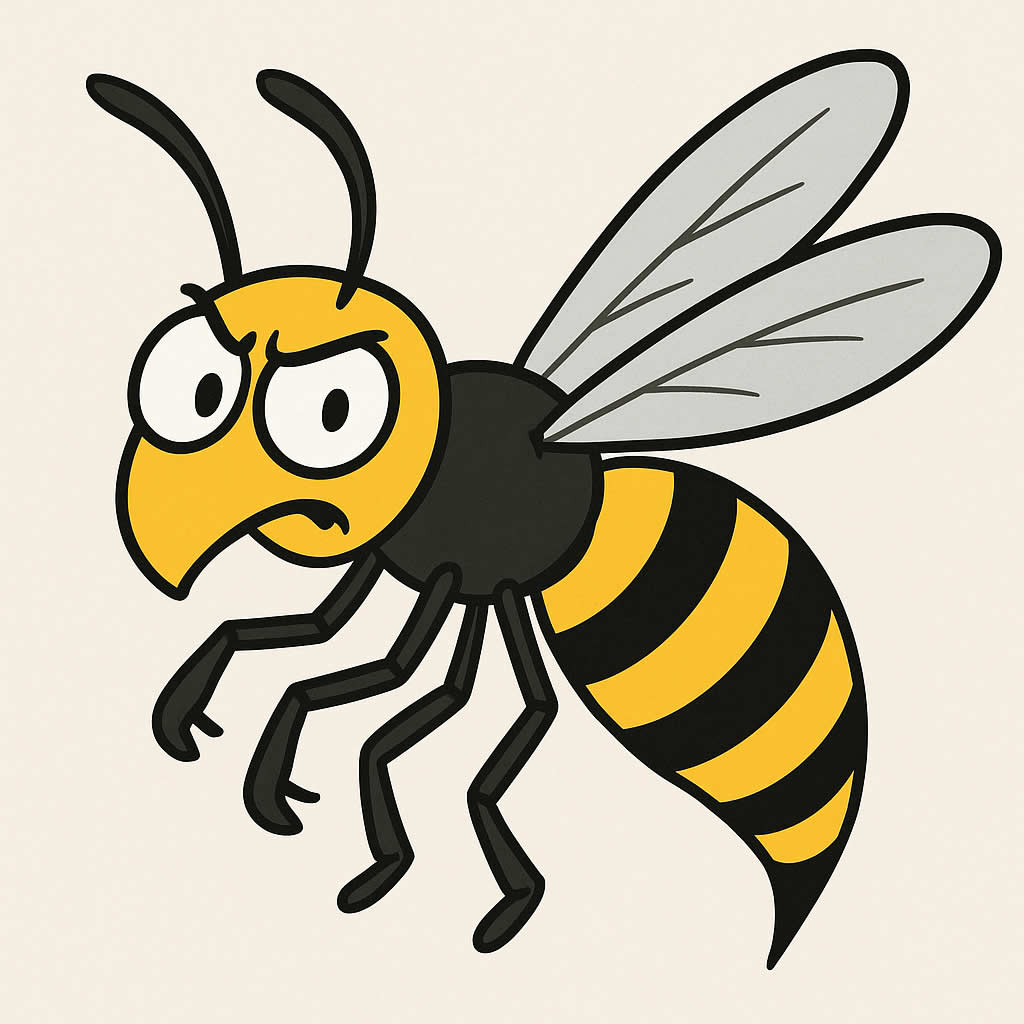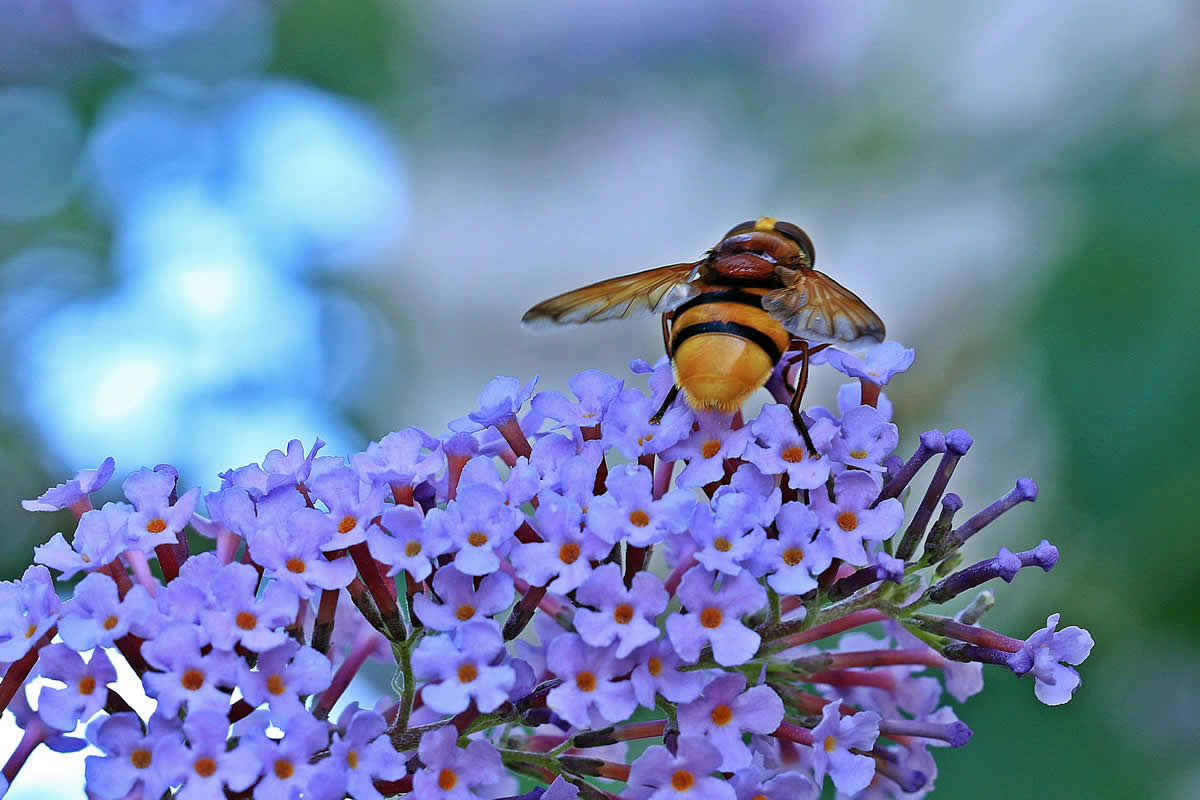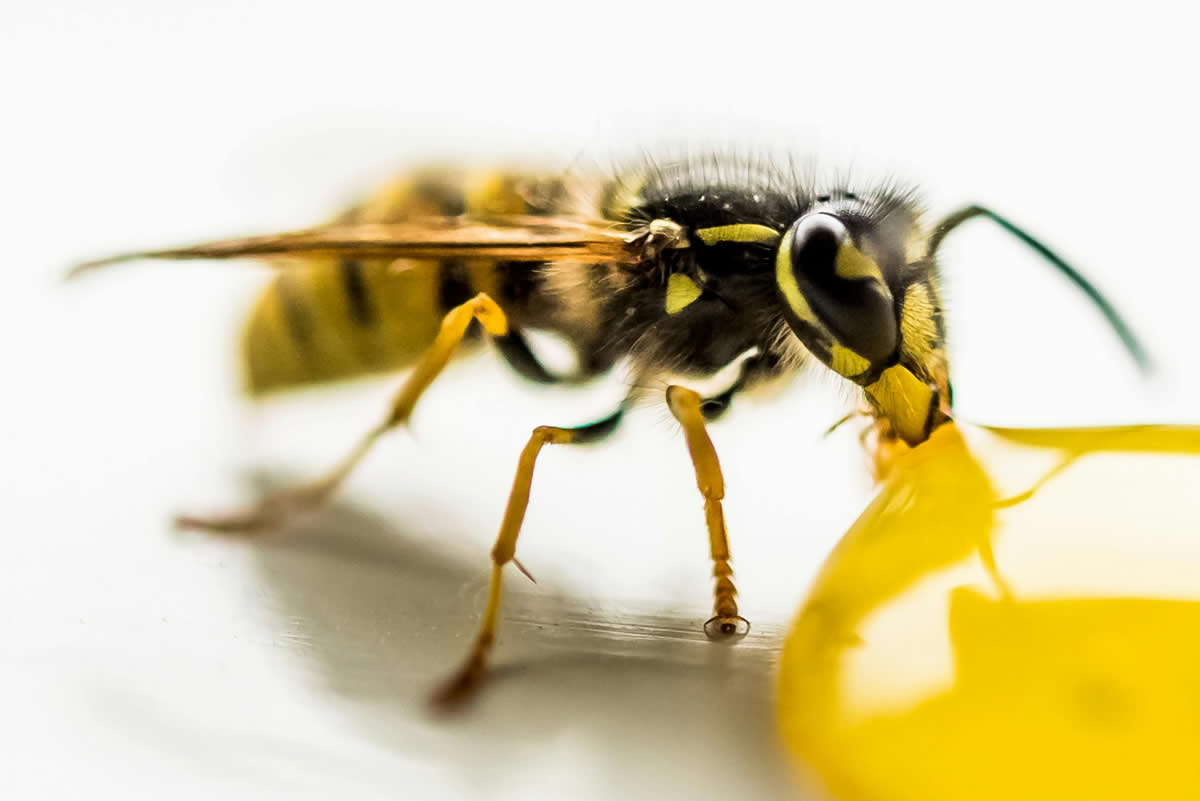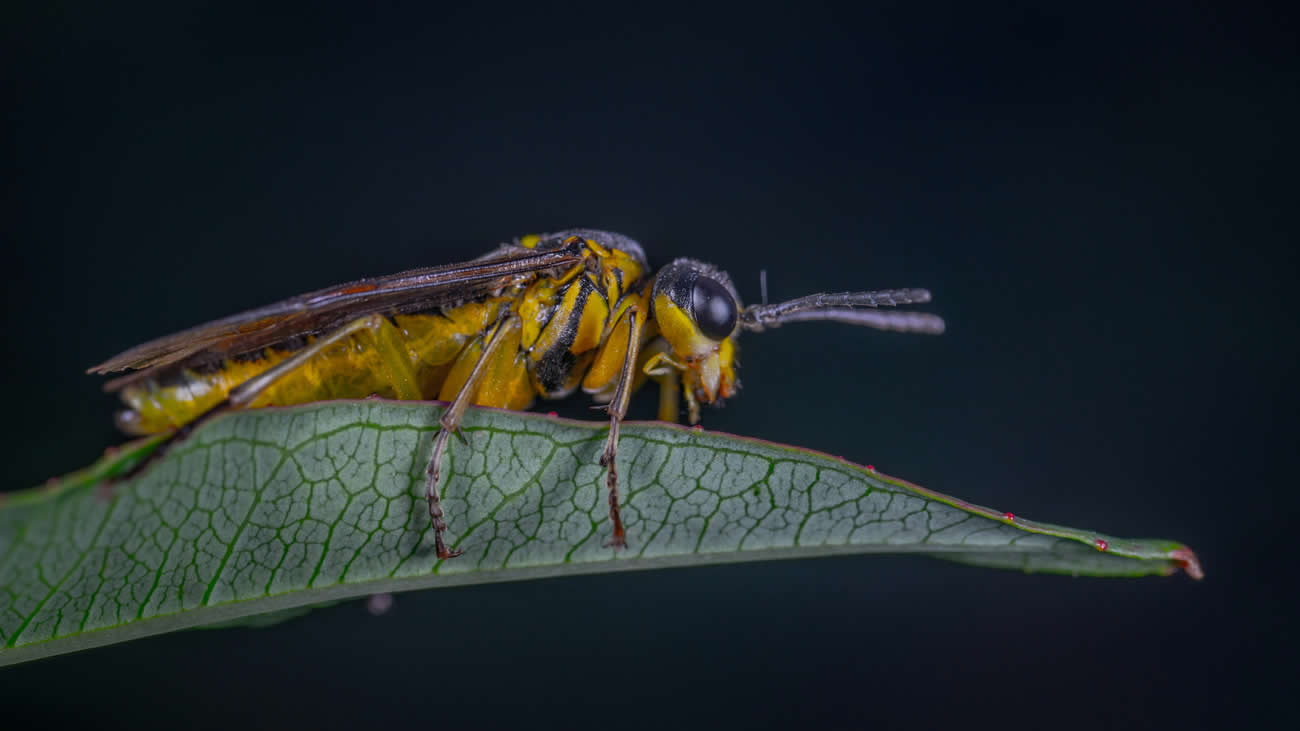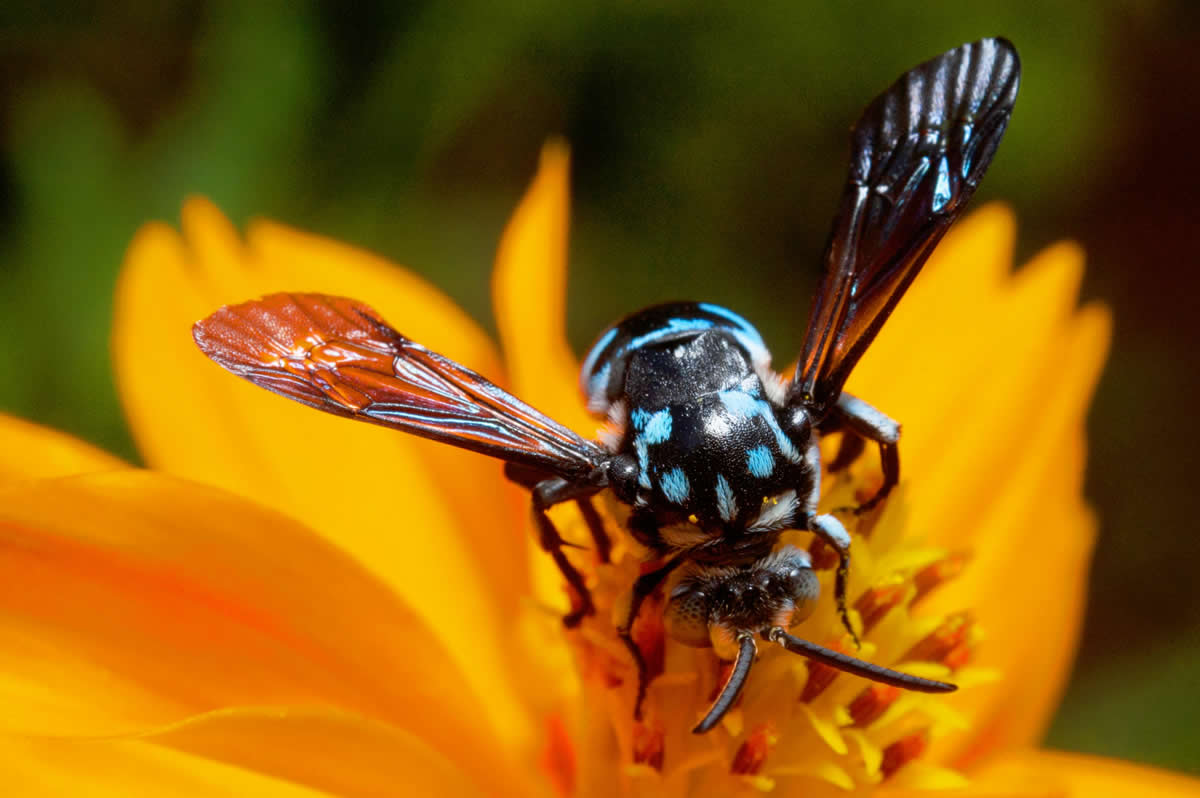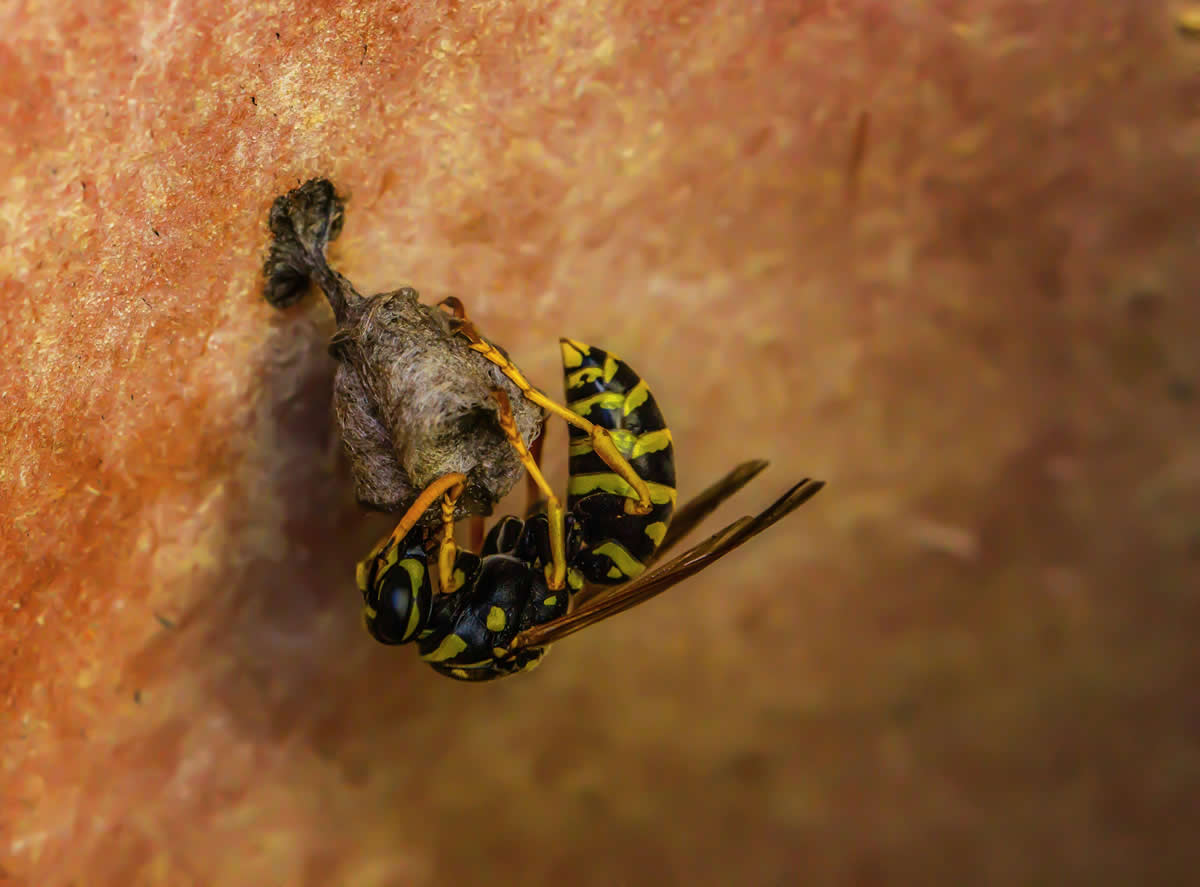Related Queries
ToggleYellow jacket wasps can be a real pain, especially if they’ve made a nest near your home. If you’re dealing with them, you’ve probably noticed how aggressive they can get when they feel threatened. They sting more than once and don’t need much of a reason to go on the attack. So if you’ve spotted them buzzing about, it’s best to deal with the problem sooner rather than later.
Let’s talk through what yellow jackets are, how to spot a nest, and more importantly—how to get rid of them safely and properly.
What are yellow jacket wasps?
Yellow jackets are a type of wasp, and you can usually spot them by their black-and-yellow stripes. They’re smaller and sleeker than bees, and they don’t have much hair on their bodies. Unlike honeybees, yellow jacket wasps can sting multiple times, and they don’t lose their stinger. That’s why they’re more dangerous, especially if there’s a nest nearby.
You’ll see them hovering around bins, sugary drinks, meat, or even pet food. They’re very food-driven, especially in late summer when their usual food sources start to run out.
Where do yellow jackets build nests?
You’ll often find yellow jacket nests in places you wouldn’t expect. They like to hide in:
- Ground holes (like old rodent burrows)
- Wall cavities
- Roof spaces
- Sheds or garages
- Bushes and hedges
They go for areas that are sheltered but still give them access to food and water. Once they’ve picked a spot, the queen starts building, and the nest can grow really fast—especially in warm weather.
How do you know if there’s a yellow jacket nest nearby?
It’s usually not hard to tell once they get going. If you’re seeing lots of wasps flying in and out of the same spot, especially in a constant pattern, that’s a big sign. They tend to follow the same flight path to and from the nest.
Other signs include:
- A low, humming noise from inside walls or ceilings
- A steady flow of wasps in one part of the garden
- Wasps appearing indoors without a clear entry point
You might not see the nest straight away, especially if it’s tucked away in a wall or underground. But the activity around it gives it away.
Can you remove a yellow jacket nest yourself?
You can, but you’ve got to be really careful. These wasps don’t mess around when they feel threatened. If you disturb the nest without the right gear or approach, you’ll likely end up getting stung—maybe more than once.
If the nest is in a hard-to-reach place or you’re allergic to stings, don’t risk it. Call a pest control professional. But if it’s early in the season and the nest is small, and you feel confident, there are ways to do it yourself.
What’s the safest way to get rid of yellow jackets?
Start by thinking about when and how you want to act. Timing matters. Wasps are less active in the evening or early morning, so that’s the best time to do anything around the nest.
Here’s what you need to do if you’re handling it on your own:
- Wear protective clothing. Cover as much skin as possible. Gloves, long sleeves, trousers, and a hat with a net or scarf around your face.
- Use a proper wasp spray. Get a wasp-specific insecticide from a DIY store. Make sure it’s designed for yellow jackets.
- Keep your distance. Most sprays can reach a metre or two, so you don’t need to get too close.
- Spray in the evening. Wait until it’s dark and most wasps are back in the nest. Follow the instructions on the spray and cover the entrance.
- Stay away for 24 hours. Let the treatment work and don’t go back to check too early.
If you’re unsure or the nest is very active, just call in the experts. Better to be safe.
What’s the best time of year to remove a nest?
The earlier in the season, the better. In spring, nests are still small, and there aren’t that many wasps yet. You’re more likely to deal with just the queen and a few workers. As summer goes on, the nest can hold thousands of wasps.
Late summer and early autumn are the worst times to deal with them on your own. Wasps get more aggressive as the season ends, especially when food gets scarce. That’s when you’re more likely to get stung.
Can you use natural methods to get rid of yellow jackets?
Some people don’t like using chemical sprays and want a more natural approach. While natural methods can work in some cases, they’re not always reliable—especially for big nests.
Here are a few things you can try:
- Peppermint oil: Wasps don’t like strong smells. Mix peppermint oil with water and spray it around the nest area. It won’t kill them but might keep them away.
- Soap and water: If the nest is small and easy to reach, a mix of washing-up liquid and water can suffocate the wasps when sprayed directly.
- Traps: You can make your own trap using a plastic bottle, sugar water, and a bit of meat. Cut the bottle top off, turn it upside down into the base, and leave it out. Wasps get in but struggle to get out.
These are more useful for reducing numbers than getting rid of the whole nest.
Will wasps return to the same spot next year?
They might. Once a queen finds a spot that works, she—or another queen—could come back the following year. That’s why it’s important to remove the wasp nest properly and seal up the area afterwards.
If the nest was in a wall or roof, block off any access points with filler or mesh once you’re sure the wasps are gone. Clean the area to get rid of any pheromones they may have left behind. These can attract other wasps.
How can you keep yellow jackets away in future?
Prevention’s always easier than removal. A few simple steps can make your place much less appealing to wasps:
- Keep bins sealed. Wasps love sweet and smelly things. Make sure bin lids are tight and clean up spills.
- Cover food and drinks outdoors. Don’t leave fruit or sugary drinks out for long.
- Seal gaps around your home. Check for cracks, holes or broken vents where they could sneak in.
- Check early in spring. Look for small paper-like nests forming. If you catch them early, they’re much easier to deal with.
It’s all about making your home less attractive to wasps looking to build.
What if someone gets stung?
Yellow jacket stings can be really painful and, for some people, dangerous. If someone gets stung, here’s what you should do:
- Remove the person from the area to avoid more stings.
- Clean the sting site with soap and water.
- Apply ice to bring down swelling.
- Take antihistamines if there’s itching or redness.
- Watch for allergic reactions. If someone struggles to breathe, feels dizzy, or their throat swells, call 999 immediately.
If you or someone in your family is allergic to wasp stings, make sure you have an emergency plan in place.
Can pest control remove yellow jackets quickly?
Yes. Professional pest control teams have the tools, gear, and treatments to sort things out quickly. Most will get rid of the nest in one visit, especially if it’s accessible.
They’ll also make sure the nest doesn’t come back by using stronger treatments and sealing entry points. It’s not the cheapest option, but it’s worth it for peace of mind—especially if you’ve got young kids, pets, or someone with an allergy in the house.
Final thoughts
Getting rid of yellow jacket wasps isn’t something you can ignore. If you leave it, the nest just grows, and the risk of being stung gets higher. Whether you deal with it yourself or bring in a pro, the key is to act early and stay safe.
Check your home and garden regularly, especially in spring, and deal with nests before they get out of hand. Use sprays carefully, follow safety steps, and don’t hesitate to call pest control if you need to.
Pest Control Denton – Pest Control Langford – Pest Control Renhold
